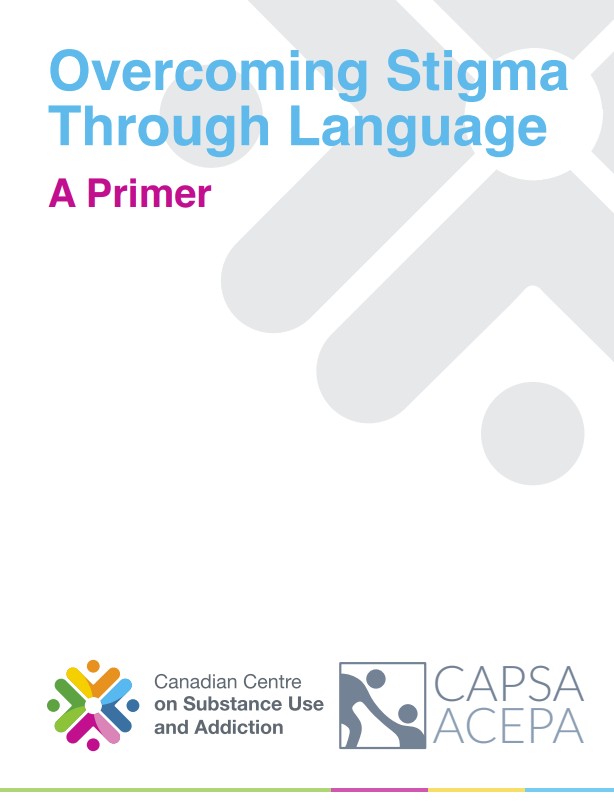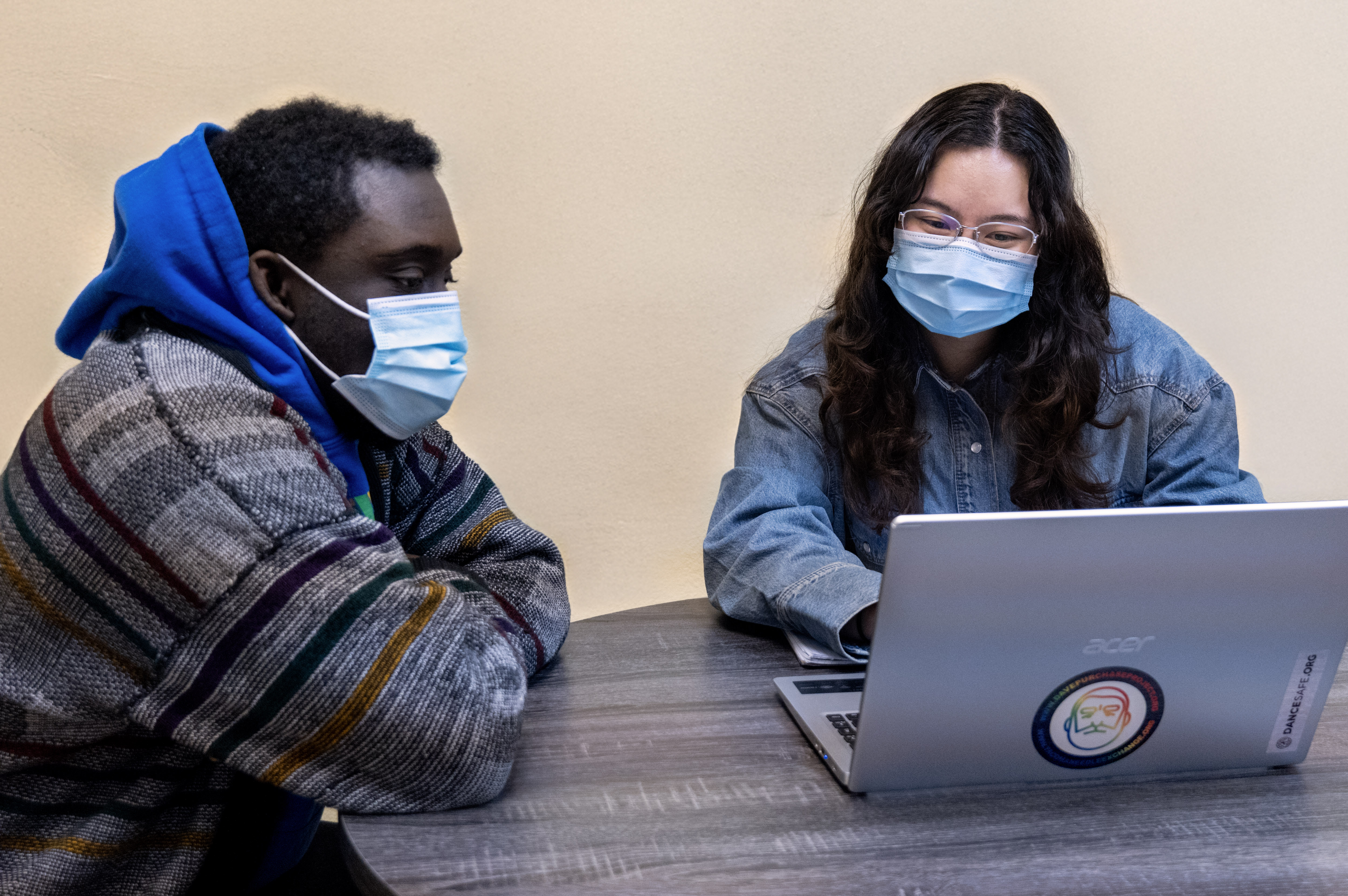Stigma Education
Research shows that stigma against people who use drugs can cause serious harm, like being rejected by others, losing a job or child custody, or even going to jail. It can also make it harder for people to get health care or other kinds of support because they fear being judged.
Below, you can learn about stigma, how words and images can make it worse, and what you can do to help reduce it.
Download our educational brochure!
(In WA State? You can also order print copies from the ADAI Clearinghouse!)
What is stigma and how does it affect people who use drugs?
Stigma is negative opinions or judgments about others. In terms of drug use, stigma means looking down on people who use drugs or have an addiction (also called a “substance use disorder”).
Stigma can make people feel ashamed, left out, or treated unfairly. It can also make others see them as less than human (“dehumanizing”). This can be especially harmful to people who already face discrimination because of their race, gender, disability, income level, sexual orientation, housing situation, age, body size, or other characteristics.
Stigma happens in many places, including healthcare. Studies show that medical providers sometimes treat people with substance use disorders differently, which can lead to worse care, fewer people seeking or getting help, and poorer health overall.
How does language affect stigma?
The words we use can increase stigma. For example, calling someone a “junkie” or an “addict” makes it seem like their drug use is their whole identity. Instead, using “person-first” language — like “a person with a substance use disorder” — recognizes that they are more than their addiction.
Negative language can also make people feel judged, making it harder for them to seek or get help. It can even lead others to believe that people who use drugs are dangerous and should be controlled or punished. This can create fear and even make people less likely to help someone in an emergency, like an overdose.
Hover over or tap the stigmatizing words below to learn what terms you can use instead:
addict, user,
abuser, junkie
person with a
substance use disorder
clean/dirty
(toxicology screen)
tested negative/
positive
alcoholic
drunk (noun)
person with an alcohol use disorder
crack baby
addicted baby
baby exposed to
drugs
drug habit
drug abuse
substance use
disorder
medication-assisted treatment/replacement therapy
medications for opioid/alcohol use disorder
How do images affect stigma?
Pictures are powerful. They shape how we think and feel, sometimes without us even realizing it. Stigmatizing images can spread harmful ideas about people who use drugs, making others see them as criminals or hopeless cases.
The Empathy Lens project promotes using positive and respectful images in drug-related education, media, and outreach. The goal is to:
- Change how people see drug use, supportive services, treatment, and recovery to reduce stigma.
- Show what real harm reduction, treatment, and recovery spaces look like to normalize community and health-related care and reduce barriers to access.
All the images in our collection are free for use by anyone for any purpose! We want our images to be used widely so they can make a difference!
Images Make It Personal

A study tested how images affect people’s reactions to a story about depression. Researchers gave some people a version of the story with pictures and some a version without. They found that people who saw images of the person in the story were more likely to connect with and feel empathy for them and even donate to a mental health cause. (Subramanian & Santo, 2021).]
How can I choose images that aren’t stigmatizing?
Here are some tips on how you can select images that don’t spread stigmatizing ideas about people who use drugs or the services that support them:
- Watch out for misinformation: Make sure images don’t spread false ideas about drug use.
- Avoid triggering images: Stay away from pictures of drugs or drug supplies unless you need them to explain something specific. Instead, consider neutral images, like a dictionary page with the word “opioids” highlighted instead of pills or powders.
- Show different kinds of people: Use images of individuals of different races, genders, ages, etc. to represent people who use drugs and those who help them.
- Keep it positive and simple: Avoid dramatic, sad-looking, or dark and scary images. Research has found that messages that rely on fear do not change attitudes or behavior. Instead, show everyday people in normal, supportive situations.
- Make it humanizing: Avoid pictures where a person’s face is hidden with only their drugs in focus. Instead, use images that show them as full people, not just as drug users.
Some of these recommendations come from a study where people with lived experience of drug use gave feedback on different images. The Addiction Policy Forum’s Guidance for Using Non-Stigmatizing Imagery for Substance Use Disorders and Justice Involvement provides an easy-to-understand summary of this study, with samples of the photos and advice.
Examples of stigmatizing images
Click the red Xs and green checks to learn what to avoid vs. what to look for when selecting images.

TRIGGERING: Pictures of drugs or drug supplies like syringes can be triggering for some people. Stay away from images like this unless you need them to explain something specific.
DEHUMANIZING: Person's face and body are blurred out and invisible, like the only thing that matters about them is their drugs.
POSITIVITY: This image shows someone who uses drugs seeking safer use supplies at a syringe services program. They are smiling and seem happy to be receiving care from someone helpful and kind.
EDUCATIONAL: This photo shows safer use supplies (naloxone, in this case) for the purposes of educating people about harm reduction and improving the health of people who use drugs.

MISINFORMATION. This image suggests that it's common to become "addicted" to buprenorphine, an effective treatment for opioid use disorder.
POSITIVITY: This is a photo of two people engaged in a contingency management treatment session, one of the few evidence-based interventions for stimulant use disorder.

DRAMATIC: The background and lighting are harsh and overly dramatic, making the overall feeling seem frightening.
SCARY/TRIGGERING: This person has been intentionally posed to make them look angry or dangerous. Also, photos of people using drugs can be triggering.
REALISTIC: This image shows what a community program for people who use drugs really looks like. It’s brightly lit and welcoming.
FRIENDLY: This photo shows someone being treated with respect and kindness by someone in their community who cares about their health and wellbeing.
Learn more about stigma

- Addictionary – Comprehensive language guide from Recovery Research Institute.
- Reducing the Stigma of Addiction – Johns Hopkins website with information about what stigma is, with a focus on both language and the importance of spreading the word about the use of medications for treating opioid use disorder.
- Overcoming Stigma Through Language: A Primer – 15 page booklet from the Canadian Centre on Substance Use and Addiction (CCSA).
- Reporting on Addiction – Website developed through a collaboration with addiction science experts, professional journalists, and journalism educators who want to improve the quality of reporting on addiction. Includes resources and training for journalists and others who write for the public.

